The Hisense A7NQ is one of the simplest QLED televisions available on the market, primarily appealing with a very attractive price. Equipped with a VA panel, it offers solid native contrast, and the additional PFS coating (another type of QLED) allows for vibrant colours, especially in older SDR content. This is a television that will work well for those who use a TV more occasionally but are looking for a device with useful extras. The Vidaa system, which has gradually established its position in the Polish market, is another plus. It supports most popular streaming applications available in Poland and offers features such as USB recording, which can be rare in this class of equipment. It is evident that the manufacturer listens to user feedback and strives to implement improvements, which is a nice touch. When it comes to picture quality, it is… simply average. Brightness is limited, so the television will not be the best choice for watching 4K HDR content. However, it performs better with older materials or regular television, where high brightness is not crucial, and colours can look really good, especially after professional calibration. Is it a good screen for gamers? The A7NQ is not a gaming monster – the 60 Hz panel and significant motion blur may deter more demanding users. Nevertheless, the manufacturer has included a few features for gamers, such as VRR, ALLM, or even displaying 120 Hz in a lower resolution. Additionally, there is an intuitive and user-friendly Game Bar that makes it easier to adjust settings while gaming. Despite this, the television is not without its drawbacks. One of the stranger problems we encountered was the complete disregard for Polish subtitles from USB. We hope this is a matter of an update, but at present, it is hard not to notice. In short, the Hisense A7NQ is a solid mid-range option. While it may not be equipment that wins all tests or aspires to the title of "television Formula 1", it will certainly satisfy many people – especially those looking for something simple and affordable. It is a good choice for someone who wants to enjoy content on a large screen without spending a fortune.
- Matching (Score)
- Our verdict
- TV appearance
- Where to buy
- Contrast and black detail
- HDR effect quality
- Factory color reproduction
- Color reproduction after calibration
- Smoothness of tonal transitions
- Image scaling and smoothness of tonal transitions
- Blur and motion smoothness
- Console compatibility and gaming features
- Input lag
- Compatibility with PC
- Viewing angles
- TV efficiency during daytime
- Details about the matrix
- TV features
- Apps
- Playing files from USB
- Sound
Hisense A7NQ vs XIAOMI A PRO 2026
Direct compare

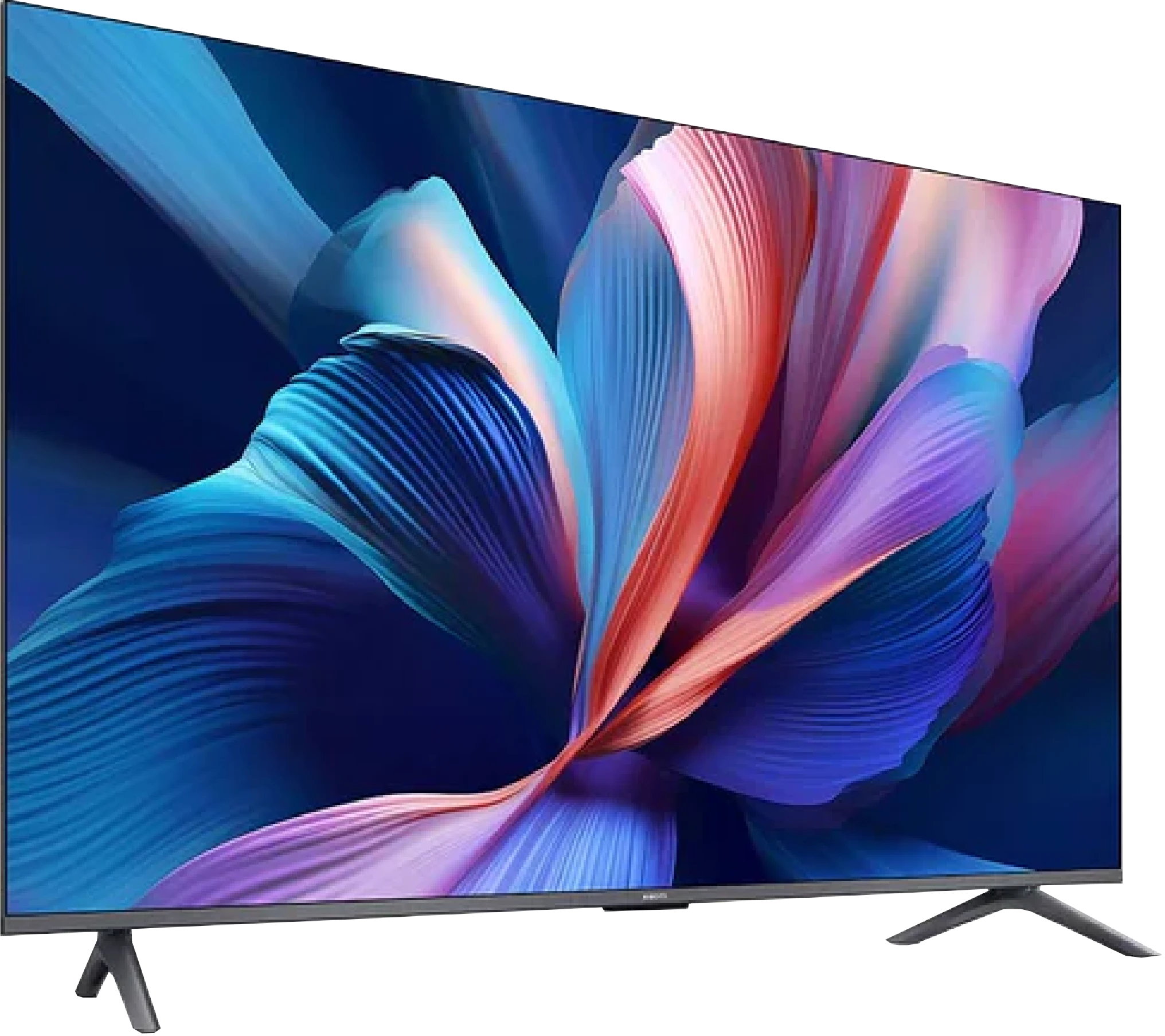
Panel type: LCD VA
Resolution: 3840x2160
System: VIDAA
Model year: 2024
Complete the survey to find out the result

Panel type: LCD VA
Resolution: 3840x2160
System: Google TV
Model year: 2025
Complete the survey to find out the result

Overall rating
6.2
5.6
Movies and series in UHD quality
6.4
6.0
Classic TV, YouTube
6.2
5.7
Sports broadcasts (TV and apps)
4.9
4.7
Gaming on console
7.0
6.2
TV as a computer monitor
5.8
2.0
Watching in bright light
4.9
4.9
Utility functions
8.7
6.1
Apps
7.7
9.6
Sound quality
5.9
5.0
Complete the survey to find out what fits your preferences
Advantages
Good native contrast
Very low input lag, even in Dolby Vision
ALLM, VRR, Game Bar and 120 Hz (Full HD) – useful features for gamers
USB recording from built-in tuners
Simplicity and speed of the Vidaa system
Support for AirPlay and Miracast
Support for Dolby Atmos and DTS:X spatial audio
VA matrix with good native contrast and decent blacks
Support for Game Boost mode at 120 Hz in 1080p and 1440p
Low input lag in 120 Hz mode
Google TV – a vast selection of apps and services
Wide colour gamut coverage (approx. 94% DCI-P3)
Decent colours after SDR mode calibration
Support for popular audio formats (Dolby Atmos, DTS:X)
Large, clear remote with a numeric keypad – convenient for seniors
Disadvantages
Average performance in HDR content
Considerable ghosting
No support for subtitles from USB (at the time of writing the test)
No support for HGiG
Low brightness
No real support for HDR10+ and other more advanced HDR formats (e.g. Dolby Vision)
Significant limitations when working with PC – lack of chroma 4:4:4, strong dithering, poor font readability
Poor viewing angles (typical for VA)
Clunky construction, legs mounted in plastic with screws
Weird system issues – stuttering, errors with Miracast and sound switching
Upscaling and digital image processing are practically non-existent
Very weak sound, virtually no bass (we felt it performed worse than the "2025" model)
Our verdict
Xiaomi A Pro 2026 is a television that at first glance does not reveal significant changes compared to its predecessor. Someone might even think it is simply a copy of last year's model with a different label. And there is some truth to that, as the main new feature, or rather the only noticeable difference, is the 120 Hz mode at lower resolutions. Credit must be given to Xiaomi, as this addition really does make a difference – it is not a solution for professional gamers, but a nod towards those looking for a smoother image during casual gaming. This is where the A Pro 2026 can shine – with a simple yet clever idea that distinguishes it in the “super-budget” segment. Unfortunately, when we begin to look at the television more broadly, excitement quickly dwindles. Even though the year has changed on the calendar, most of the issues known from the A Pro 2025 have remained – the system can still experience strange stutters, and the occasional errors can be quite irritating. Additionally, there is a lack of any serious tools for digital image processing, which worked quite decently last year. As a result, there are many limitations in the design that the competition at a similar price point is already attempting to mask. In terms of picture quality, we will not deceive you either. A brightness level of 200–300 nits does not stand a chance against more demanding materials. Yes, with simpler streaming content, one can manage to watch something, but with high-budget productions, it is immediately evident why the television costs what it does. The impression of watching a flattened image stripped of details accompanies us almost every time. And here we get to the crux of the matter. The Xiaomi A Pro 2026 is a television for those who really require very little. As a daily screen for series, news, or YouTube – it works quite well, especially thanks to its operating system, which is GoogleTV. Also, if someone is looking for budget equipment and additionally would like a taste of smoother gameplay in games due to the 120 Hz mode, they may even be satisfied. But anyone expecting at least average picture quality, a stable system, and proper functionality will quickly notice that there are other budget models on the market that simply perform better.
TV appearance



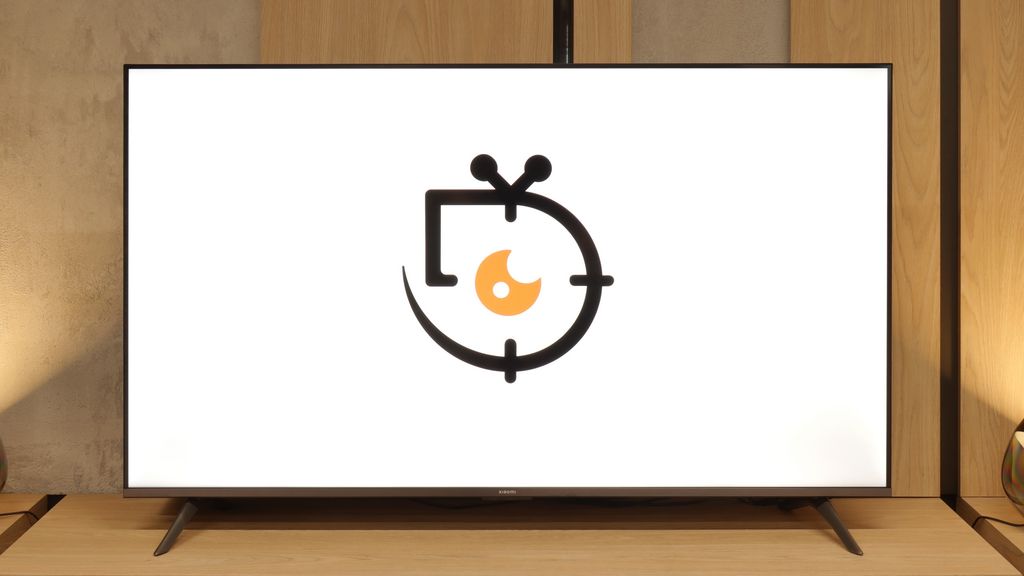
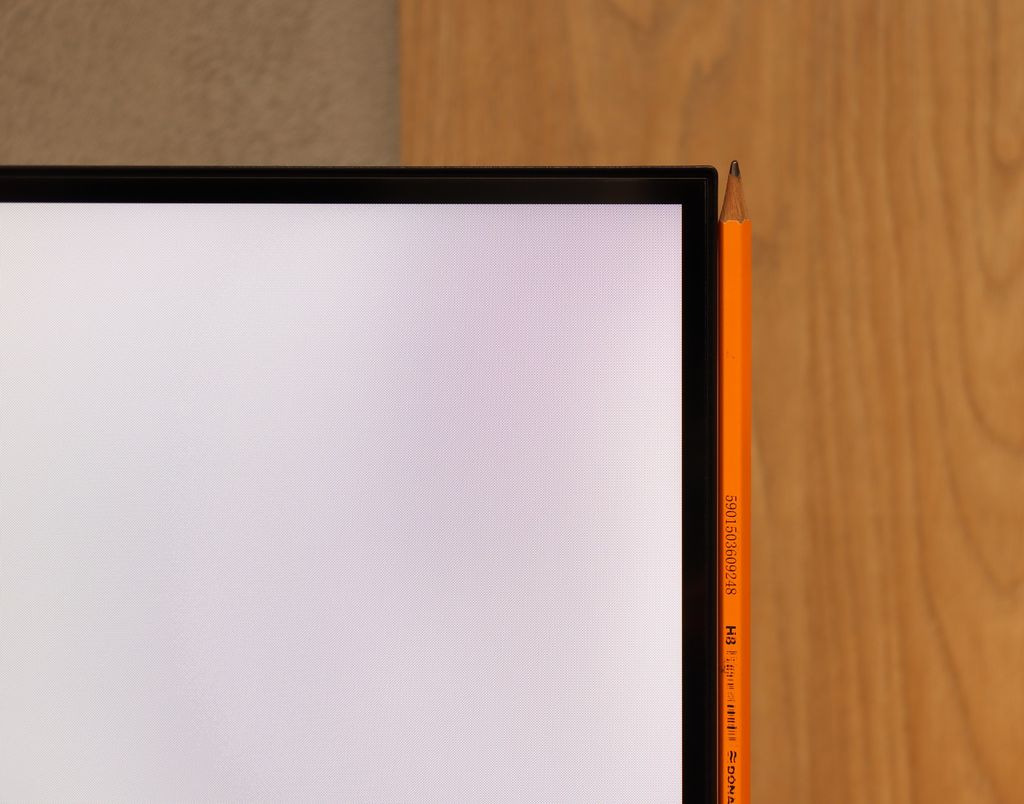
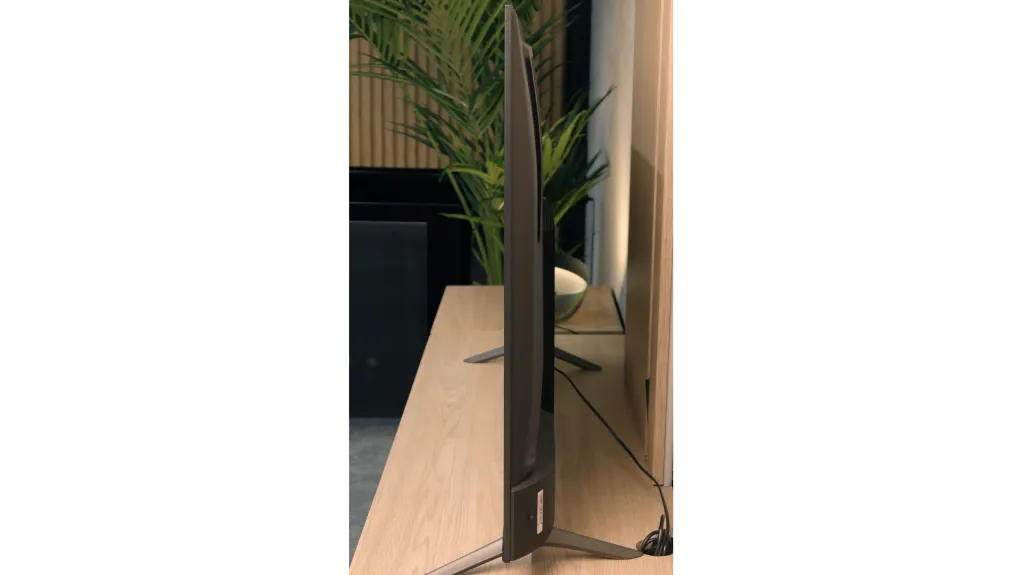
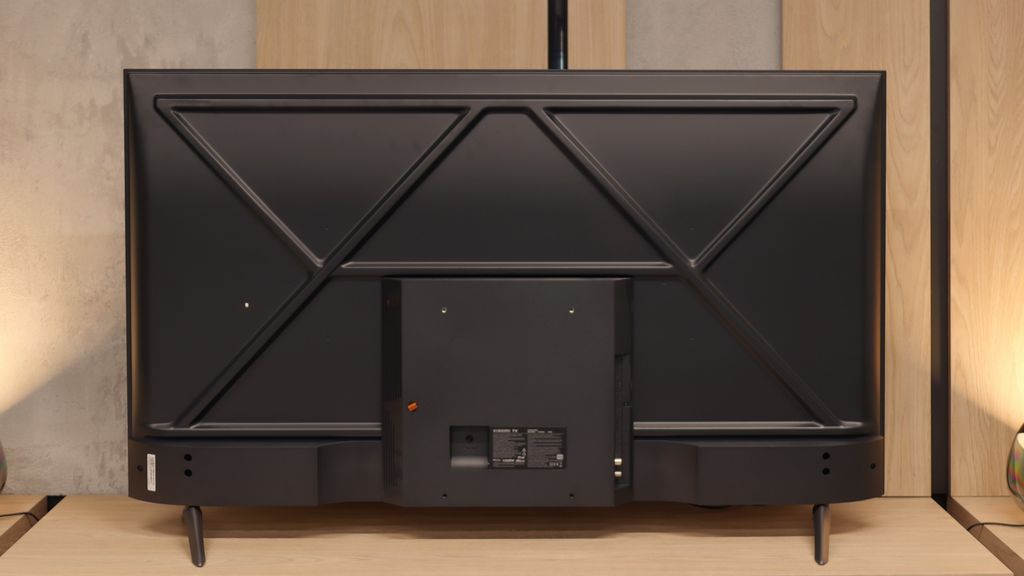
Contrast and black detail
6.3/10
6.1/10
Local dimming function: No
Local dimming function: No
Contrast:

Result
8,300:1

Result
7,200:1

Result
6,200:1

Result
6,500:1

Result
6,200:1

Result
5,000:1

Result
6,550:1

Result
7,300:1

Result
6,600:1

Result
4,900:1
Halo effect and black detail visibility:



The Hisense A7NQ uses a VA panel, which by definition offers better contrast than IPS, and indeed – it performs quite well here. With a contrast ratio of around 6500:1, the image has a perceptible depth, and scenes like the one from Oblivion can look really good. We see decent separation of lights from the darker areas of the image. However, there is one "but" – the lack of local dimming. In this price range, it's of course normal, but unfortunately, it affects the quality of blacks. In some scenes, the blacks take on blueish hues instead of that truly deep, inky black. It’s not anything dramatic, but if we watch films in a dark room, the differences can be more noticeable. In short, the contrast is good for a VA panel – it's solid. For the average user, this will be more than sufficient, especially in well-lit rooms. There are no fireworks here, but it's a fair result for this class of equipment.
One of the biggest advantages of even a budget model like the Xiaomi A Pro 2026 is the use of a VA panel. It is responsible for quite a decent contrast, which in our measurements oscillated around 5000:1 – 7000:1. On the screen, this translates to a stable image with a fairly deep black – something that is difficult to find in competitive models with an IPS panel without local dimming. Xiaomi has also added a feature for global dimming of the entire panel. It sounds good, but… we advise you to turn it off immediately. Why? Because the screen begins to behave very strangely in darker scenes – sometimes it dims so much that practically nothing is visible, while at other times it brightens so much that the already dark blue black turns into a bright blue. At that moment, we felt as if the television was simply damaged. Fortunately, without this feature, the contrast looks really solid. It is definitely not on the level of advanced televisions with local dimming, but in its price range, it will comfortably satisfy most users – especially if you are not watching in a completely dark room, but have at least a little light in the background, which effectively masks the imperfections of the "blue black".
HDR effect quality
5/10
4.1/10
Luminance measurements in HDR:

Result
295 nit

Result
348 nit

Result
379 nit

Result
315 nit

Result
348 nit

Result
220 nit

Result
248 nit

Result
322 nit

Result
315 nit

Result
326 nit
Scene from the movie “Pan” (about 2800 nits)


Scene from the movie “Billy Lynn” (about 1100 nits)


Static HDR10


Dynamic: Dolby Vision
Dynamic: HDR10+


HDR luminance chart:
XIAOMI A PRO 2026
HDR luminance
Hisense A7NQ
HDR luminance
We checked how the Hisense A7NQ performs with HDR, and there are no surprises here. The luminance graph showed a maximum brightness level of 370 nits. The result? Exactly what one could expect – average. At around 350 nits, HDR does not particularly stand out compared to SDR. Indeed, there is a subtle difference in more brightly lit scenes, but it is not an effect that leaves you stunned. As for the coverage of the wide colour gamut, the result was 92% for DCI-P3 and 70.2% for BT.2020. These are decent values for a TV in this class, which uses a PFS coating – the same one that is sometimes promoted as QLED. Colours look good, but we shouldn’t expect something that competes with the best screens on the market. HDR on the Hisense A7NQ is more of an addition than a "game changer." For those looking for solid image quality on a moderate budget – quite acceptable. However, if we expect full HDR capabilities, it is worth looking at models from the higher price range.
If you are hoping for a cinema-grade HDR effect in the new Xiaomi A Pro 2026, you better cool your expectations quickly. This television is simply too dim to fully showcase the capabilities of contemporary films or series designed for the highest image quality. Our measurements showed brightness in the range of 200–300 nits, which is more akin to SDR content than ambitious HDR productions. In practice, this means that while most films may look fine, they certainly won't evoke that "wow" effect that other televisions are known for. Fortunately, not everything is lost – we must credit the PFS LED filter used here, which is a solution similar to the quantum dot technology found in QLEDs. Thanks to this, the coverage of the DCI-P3 colour palette reaches about 94%, resulting in vibrant, saturated colours in the vast majority of materials.
Factory color reproduction
6.1/10
3.5/10


Factory Mode
After calibration


Factory Mode
After calibration
When testing the Hisense A7NQ in Filmmaker mode, we were hoping for compliance with the manufacturer's assumptions, but unfortunately, reality looks different. The main issue, as with most televisions, is white balance. In the case of the A7NQ, we noticed a clear dominance of blue, which affected both lower quality materials and 4K HDR content. The results of the Color Checker tests confirm this, and the comparative images speak for themselves – the leading actress in "factory" mode appears cool and pale. It looks as if she has been drained of life.
As for brightness characteristics, both gamma and the EOTF curve show that the image is excessively bright. As a result, everything appears flat, lacking depth and contrast. This state of affairs definitely does not work in favour of the A7NQ and makes the viewing experience in factory mode leave much to be desired. If we expect natural colour reproduction and appropriate image depth, the A7NQ in Filmmaker mode is unlikely to impress us. It is a television that requires considerable adjustment to bring out its potential.
What we saw in Filmmaker mode took us by surprise – and unfortunately not in a good way. The mode advertised as Hollywood standard resembled more of a shop window display. The white balance was shifted towards blue, leading to significant colour mistakes and burnt-out scenes in SDR content. It was slightly better, though still not perfect, in HDR materials. There were also issues there – the colour saturation and the entire palette consistently drifted towards cooler tones, resulting in an image that had more of an artificial, cold tint instead of a cinematic character. In other words: even in Filmmaker mode, which should showcase this television, we got an effect far from expectations.
Color reproduction after calibration
7.6/10
7/10




Hisense A7NQ offers several tools that allow for improved image quality, so we decided to take matters into our own hands and "dig around" in the settings a bit. Thanks to professional tools and measurements, we managed to correct the white balance, eliminating the excessive dominance of blue colour in both HD and 4K materials. This is a significant step forward, as in the Color Checker test, the colour reproduction errors in lower quality content dropped to a much more acceptable level. Unfortunately, the 4K materials still fall short of perfection – the colour inaccuracies are considerable and stem from the limitations of the television.
As for the gamma, we managed to set it at the correct level, which significantly reduced the excessive brightening of the image. However, the issue with brightness characteristics in 4K content remains unresolved – the EOTF curve still shows excessive brightness across the entire screen. It’s possible that correct implementation of dynamic tone mapping could help here, but as we mentioned earlier, this feature in the Hisense A7NQ works rather poorly, rather than being helpful. Nevertheless, the calibration has significantly improved the overall image reception. The director's vision is now much better represented than in the factory settings, which will certainly be appreciated by more demanding viewers.
Although Xiaomi is not a brand associated with top-tier televisions, it must be acknowledged that even in a budget model like the A Pro 2026, the manufacturer left plenty of calibration settings. After a few adjustments, the SDR image gained a completely new look. Colours stopped drifting towards blue tones, whites took on a more natural quality, and most errors dropped to a practically invisible level. As a result, SDR content looked very good, surprisingly so for this price range.
It was somewhat different with HDR materials. Here, it was immediately evident what we had already mentioned – clipping in bright scenes and issues with balance control. Calibration helped only partly, as the limitations of the panel itself played a role. However, it must be emphasized that for SDR, the television had transformed beyond recognition and in a decidedly positive direction.
Smoothness of tonal transitions
9/10
9.3/10












This is one of the greatest advantages of this television. The Hisense A7NQ performs exceptionally well with the fluidity of tonal transitions, even in the most demanding scenes. The colour blends are practically invisible, resulting in very smooth gradations and a naturally looking image. Of course, if we are purists and scrutinise the screen with a "hawk's eye," we may notice slight joins, particularly in the darker areas of the image. However, these are subtle imperfections to such an extent that most users will not even notice them.
The television really handles colour blending well, and in most scenes, it's difficult to spot any imperfections. This is most evident in the bright segments of films, where tonal transitions look almost perfect; the image is then smooth and natural. Darker scenes present slightly worse, where characteristic banding can be noticed. Fortunately, this is not a flaw that stands out prominently, and for most viewers, it will remain practically unnoticed.
Image scaling and smoothness of tonal transitions
5.5/10
3/10
Smooth transition function


Image without overscan on the SD signal


The Hisense A7NQ impresses with the smoothness of tonal transitions in 4K content, but unfortunately, there is no feature here to improve this aspect in older materials of lower quality. In such cases, colour transitions become more visible, which can slightly detract from the overall image, especially in scenes with a lot of gradients.
When it comes to upscaling, the television performs surprisingly well. The image is noticeably improved, although there are some compromises. It can be seen that the television adds a bit of artificial sharpness, and background elements, such as branches, display slight "jaggies." However, these are details that will primarily catch the eye of those who pay attention to such nuances.
Upscaling and digital image processing in the Xiaomi A Pro 2026 are not among the strengths of this model. One might expect that since the television was not designed to achieve record brightness levels, the manufacturer would focus on a more robust processor and a set of features that would "enhance" lower-quality images. Unfortunately – and here we are also faced with significant disappointment. On the positive side, we can note reasonably good upscaling, which handles HD materials and boosts them up to 4K in an acceptable manner. However, this is where the list of advantages ends. The television does not offer any features that improve tonal transitions or smooth out digital imperfections, so in most cases, we get a raw image, exactly as we deliver from an external source. On a large screen, such a lack of support makes lower-quality materials simply look bland. An additional problem is the phenomenon of overscan. When watching older materials, it happens that part of the image gets cut off, which only amplifies the impression that Xiaomi still has a lot of ground to make up in this category.
Blur and motion smoothness
3.8/10
4.5/10

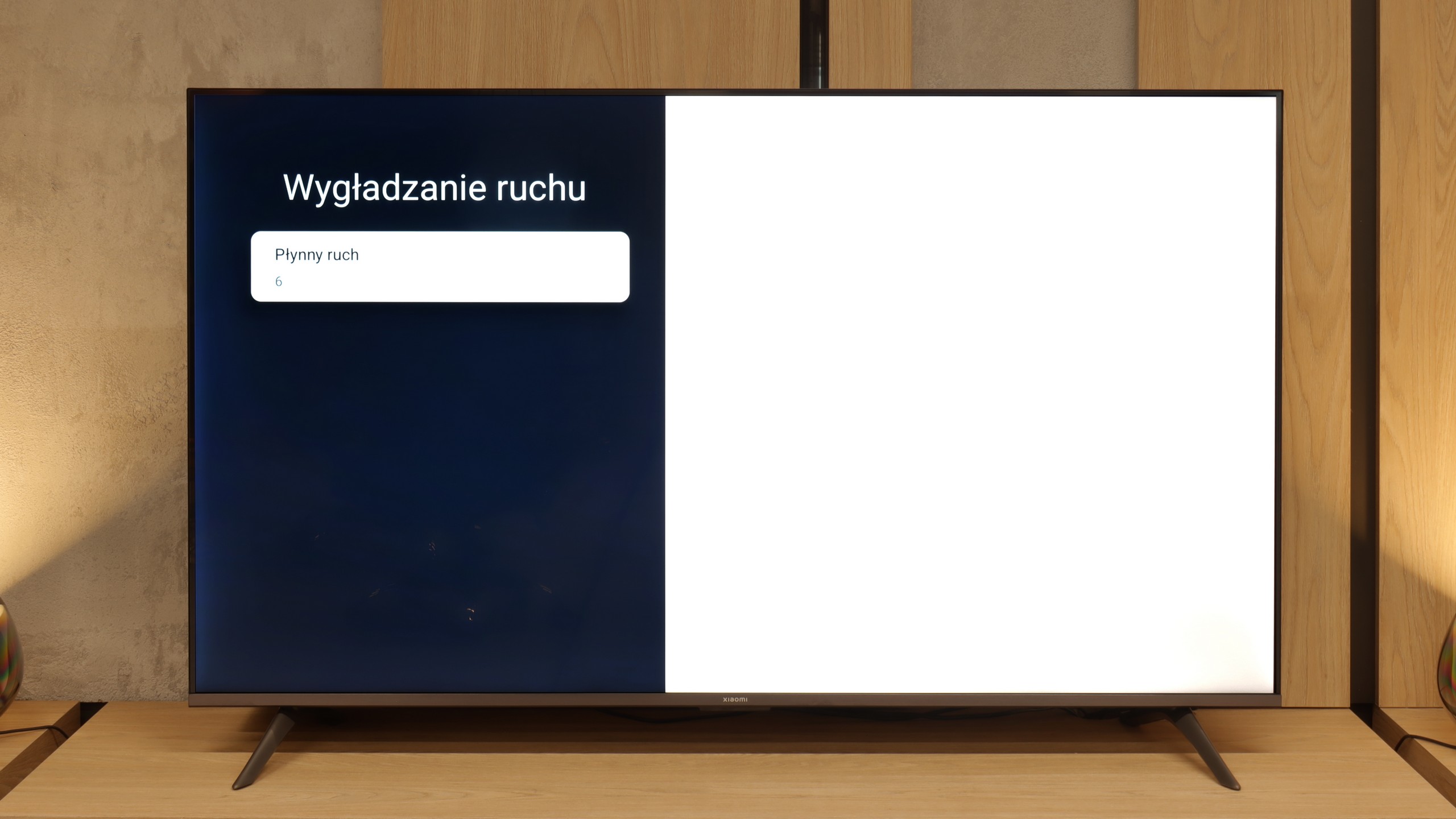
Blur (native resolution, maximum refresh rate):






Blur (BFI function enabled):



Smużenie ():
Smużenie (1440p@120Hz):



The Hisense A7NQ is equipped with a 60 Hz panel, which means that dynamic scenes – for example in sports or games – perform rather averagely here. This is standard for this class of equipment, but it must be acknowledged that watching more intense, fast-moving content can leave a lot to be desired. However, when it comes to films, the television offers a motion smoothing feature that operates on a 10-point scale. The "judder reduction" option allows you to tailor the smoothness of the image to your own preferences. At the lowest setting, we get a natural film frame rate, which will please cinema purists. Meanwhile, the maximum setting provides a very smooth, theatrical image that may appeal to those who prefer a more "smoothed" motion.
The fluidity of motion in the Xiaomi A Pro 2026 is an interesting compromise that arises from the hybrid matrix used here. At its native 4K resolution, the maximum refresh rate is 60 Hz – sufficient for those who mainly watch films and series. It is precisely with them in mind that the manufacturer has added a motion smoother, allowing users to adjust the image to their own preferences – opting for greater fluidity or leaving more "cinematic" frames depending on the settings.
Console compatibility and gaming features
6.3/10
3.6/10
- ALLM
- VRR
- VRR range48 - 60Hz
- Dolby Vision Game Mode
- Correct implementation of HGIG
- 1080p@120Hz
- 1440p@120Hz
- 4K@120Hz
- Game bar

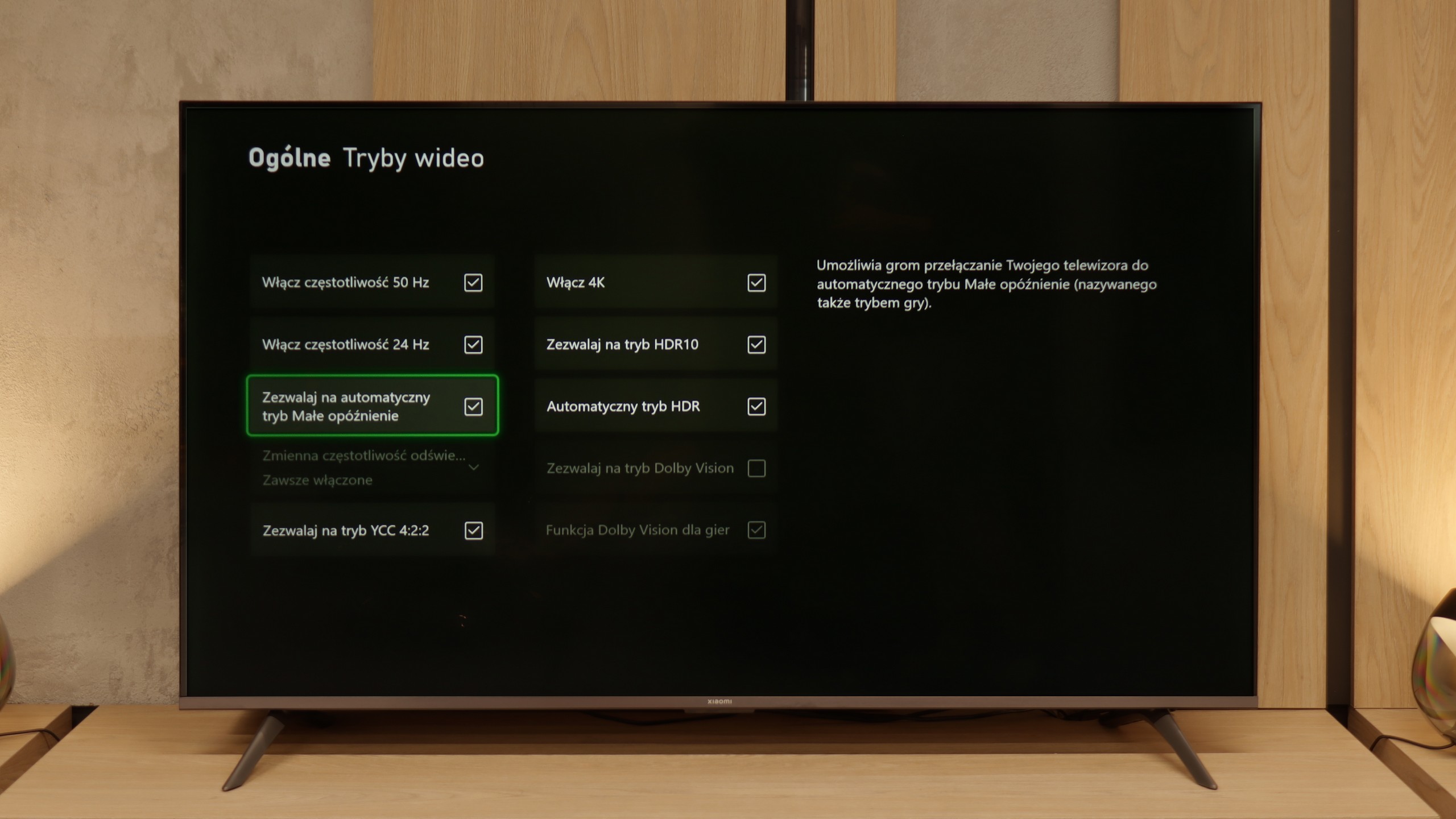

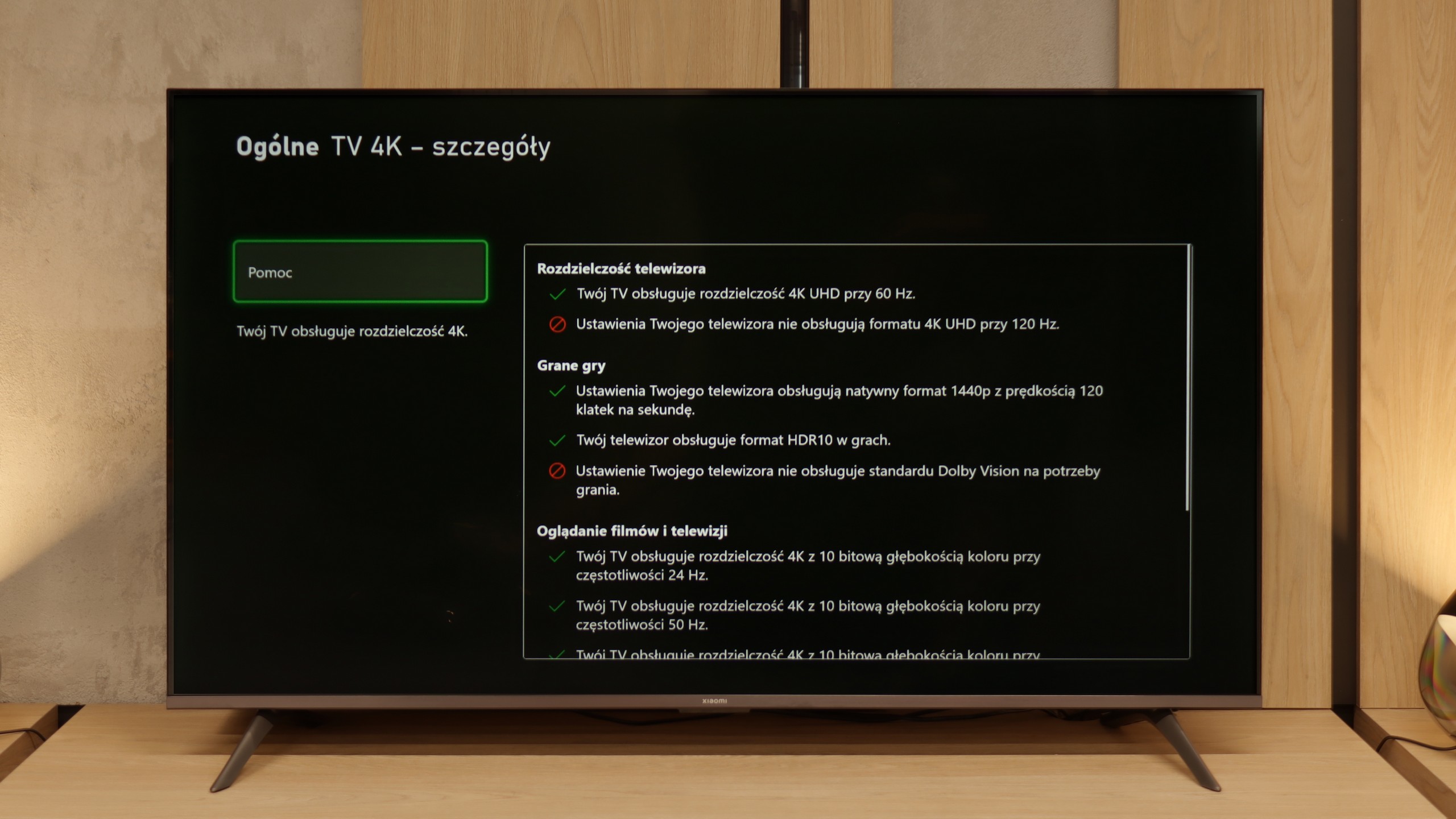

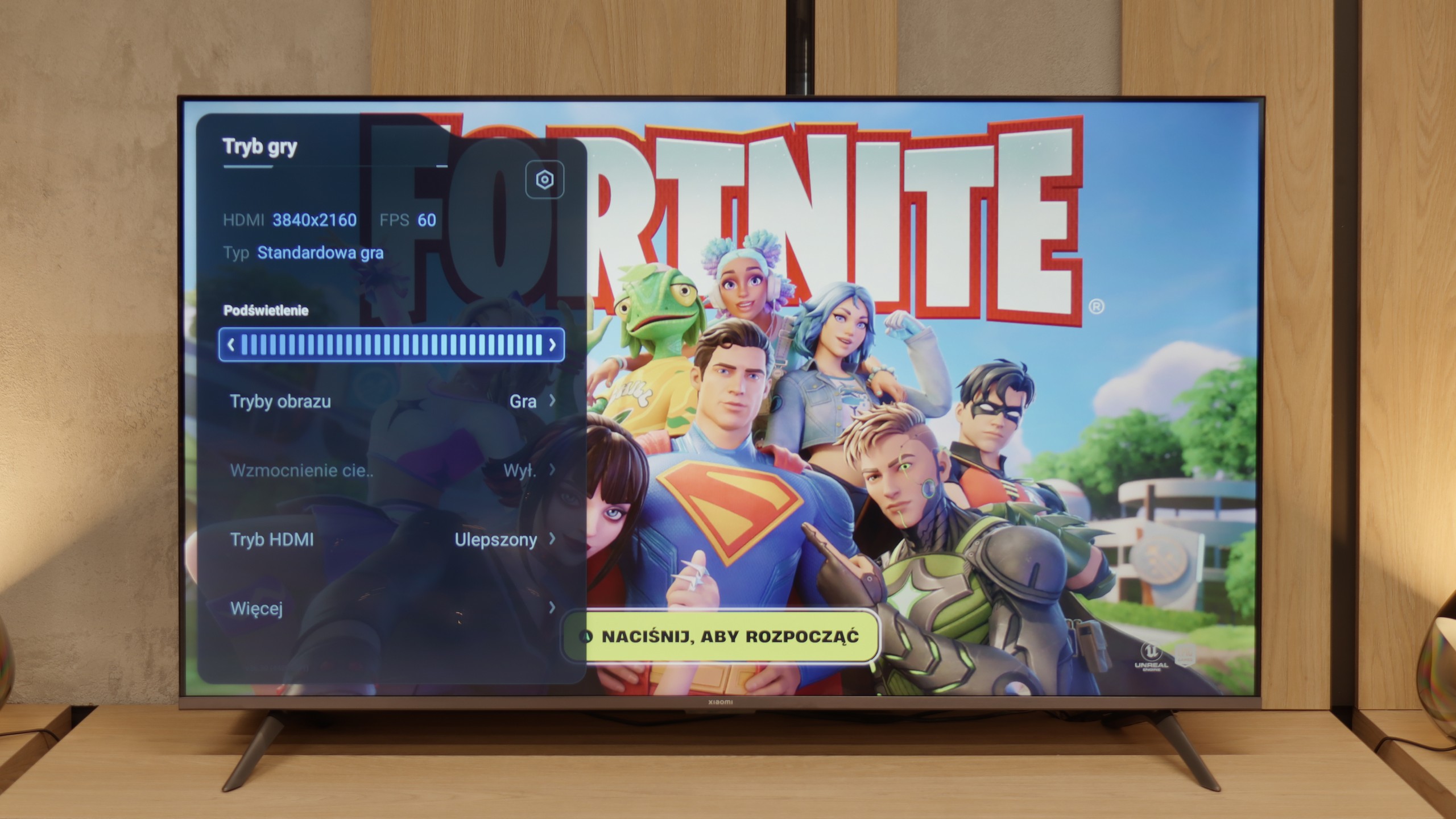

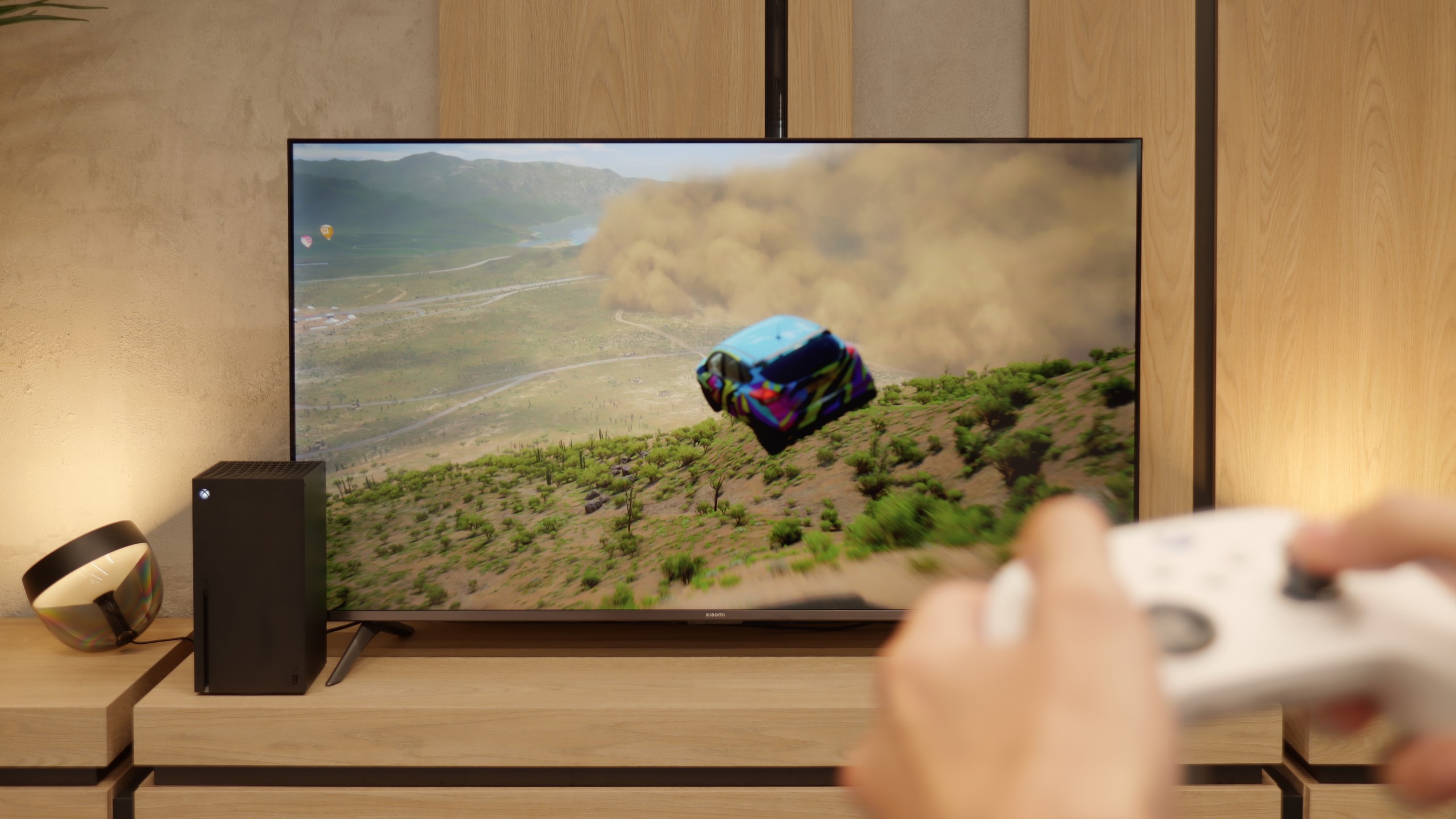
Hisense A7NQ is a piece of equipment that can pleasantly surprise gamers, although it is not without its flaws. The fact that we have a 60 Hz panel here immediately suggests that the television is not designed for the most demanding gaming scenarios. The motion blur that we described earlier can also be an obstacle, especially in dynamic games.
However, there are a few things that are worth praising. The television supports ALLM (automatic game mode) and VRR (variable refresh rate), which is not always standard in this price range. The biggest surprise, however, is that the A7NQ can display images at 120 Hz – albeit only in Full HD resolution, but nevertheless, it's a significant nod to gamers. This provides the option to choose between smoothness and resolution, which is not obvious in televisions at this price.
A nice addition is the Game Bar, which is clear and practical – all the most important functions are at hand, without digging through the settings. However, it lacks support for HGiG, which may be a disappointment for gamers looking for perfect HDR in games.
Exactly – since Xiaomi has included the "Game Boost 120 Hz" feature, one might expect that they would follow up with a solid gaming package. Unfortunately, reality quickly dampens this enthusiasm. Aside from this mode (which, it must be admitted, is a great addition in a budget design), we only have a rather odd player panel. It's hard to call it a full-fledged "game bar" – it’s more of a simple overlay on the TV Menu with limited capabilities. And that would be about it. There’s a lack of ALLM, so the TV won’t automatically switch to game mode. There’s no VRR, so you can forget about smooth frame sync. We also won’t find support for Dolby Vision in games or the HGiG format, which are becoming increasingly standard on consoles. In short: besides the Game Boost 120 Hz, which actually allows for a more enjoyable experience at 1080p or 1440p, the Xiaomi A Pro 2026 offers nothing that could particularly attract gamers.
Input lag
9.9/10
9.5/10
SDR
HDR
Dolby Vision
The Hisense A7NQ definitely has something to boast about when it comes to input lag. It is really very low, which is immediately noticeable while gaming – both in standard game mode and with Dolby Vision enabled. Regardless of the settings, the response is instantaneous, making controls in games smooth and responsive. This is definitely a plus for any gamer who doesn't want to worry about delays. Even more dynamic gameplay on this television won't be a problem. In this category, the Hisense A7NQ truly stands out from the competition.
The input lag on the Xiaomi A Pro 2026 is quite decent and definitely not its weak point. The best results were achieved in 1080p@120 Hz and 1440p@120 Hz modes – in those, the television goes below 10 ms, which can easily be described as an outstanding result, and more than sufficient even for the more demanding gamers. The situation changes with 60 Hz content – the input lag then rises to around 25 ms. While these may not be the best figures on the market, they are perfectly acceptable for casual gaming or firing up a console in the evening. Especially since in most cases, it's still worthwhile to enable the 120 Hz mode, which is the most advantageous for gamers.
Compatibility with PC
5.8/10
2/10

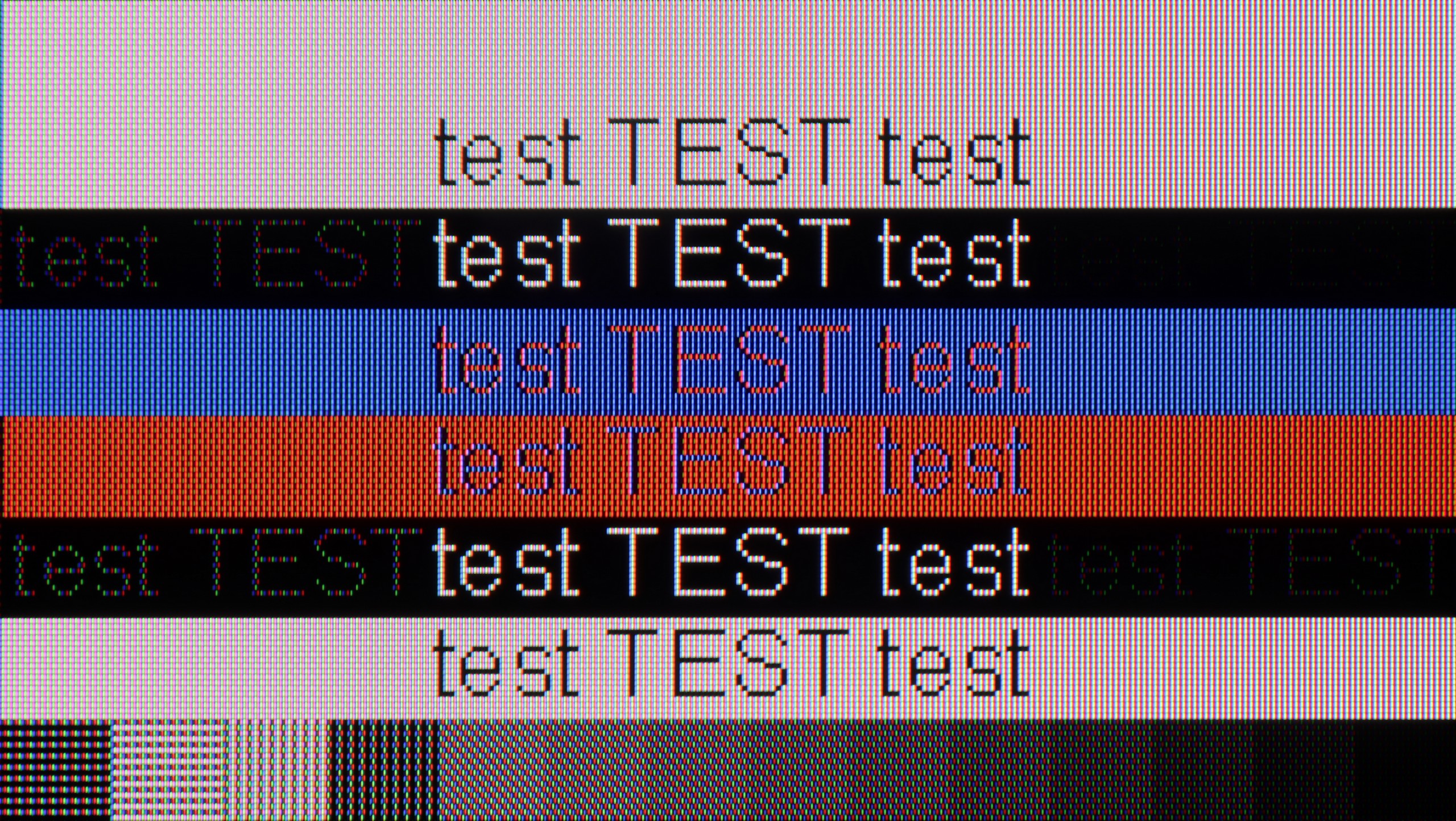
The Hisense A7NQ performs well if we want to use it as a work monitor. Thanks to 4:4:4 chroma support, the fonts are clear and readable, regardless of the background. This is a significant advantage, as working with documents or browsing websites on this television is quite enjoyable. When it comes to gaming on PC, the situation is less optimistic. The 60 Hz panel unfortunately doesn't allow for a smoother experience, which may disappoint gamers looking for something more. Even the presence of G-SYNC and low input lag does not change the fact that dynamic titles may look average.
Xiaomi A Pro 2026 as a computer monitor? There's no point beating around the bush – it's very bad. While the 120 Hz mode can still be used in games at lower resolutions, for daily work the television is completely unsuitable. There's a lack of full support for chroma 4:4:4, meaning fonts are blurred and sometimes even rainbow-like. Additionally, there's significant dithering, causing the image to appear uneven – some pixels shine brighter, others dimmer, and vertical lines can even break apart. In practice, this means that text (especially coloured and on a dark background) becomes hard to read. Light text manages to hold up somewhat, but it’s hard to talk about any comfort here. In this category, we give the Xiaomi A Pro 2026 a score of 2/10 (+1 for the additional high refresh rate mode), and there’s really no point in dwelling on this further.
Viewing angles
3/10
3/10
The Hisense A7NQ does not surprise in this category. The viewing angles are typical for a VA panel – which means that if we sit directly in front, everything looks fine, but if we shift slightly to the side, the image begins to lose quality. Colours become less saturated, and black starts to turn to shades of grey. This is standard for VA panels, and it is rather difficult to expect anything different. Therefore, if we plan to watch television with a larger group of people, it is worth considering positioning the television so that everyone has a chance to sit as close to the centre of the screen as possible.
Xiaomi A Pro 2026 uses a VA panel, which immediately suggests that viewing angles are not its strong suit. When looking at the screen from the side, we quickly notice a loss of quality – colours noticeably fade, and the whole image appears washed out. The drop in brightness may not be as drastic as in some constructions based on similar technology, but that does not change the fact that this is clearly a weak point of this model. If we plan to use it as a large, cheap screen for the living room, we need to reckon with this limitation.
TV efficiency during daytime
4.9/10
4.9/10

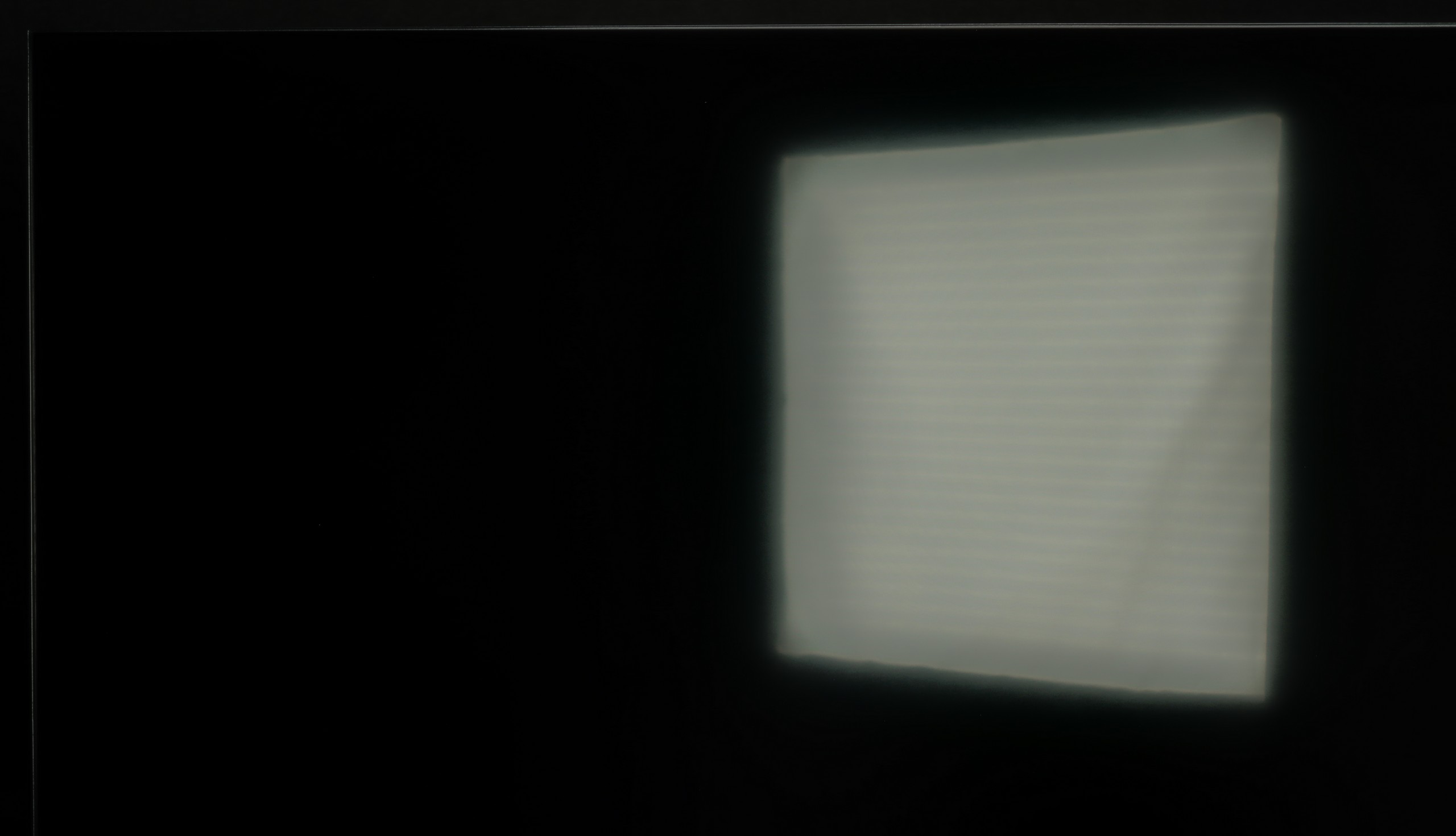


Matrix brightness
Average luminance SDR
XIAOMI A PRO 2026: 334 cd/m2
Hisense A7NQ: 371 cd/m2
The Hisense A7NQ does not make the best impression in brightly lit rooms. The panel performs averagely at reducing reflections, so if there is a lot of light coming in through the windows, the screen can turn into a mirror. Additionally, the brightness level of 370 cd/m² is only suitable for moderately sunny rooms. In more demanding conditions, where the sun lights up the screen, the image begins to lose visibility and it becomes difficult to see all the details. If we plan to use the television mainly during the day in a brightly lit room, it is worth considering this, as in such conditions the A7NQ may not be the best choice.
Xiaomi A Pro 2026 performs quite well during the day. The display has a satin coating that manages to dull reflections somewhat, so the colours do not lose their vibrancy, even when the room is bright. Just remember that it is not an extremely bright screen – the average brightness is around 350 nits. In a typical, moderately sunlit living room, it is sufficient, but if you have large windows and plenty of sunshine coming in, it might simply be difficult without blinds or curtains.
Details about the matrix
Subpixel Structure:

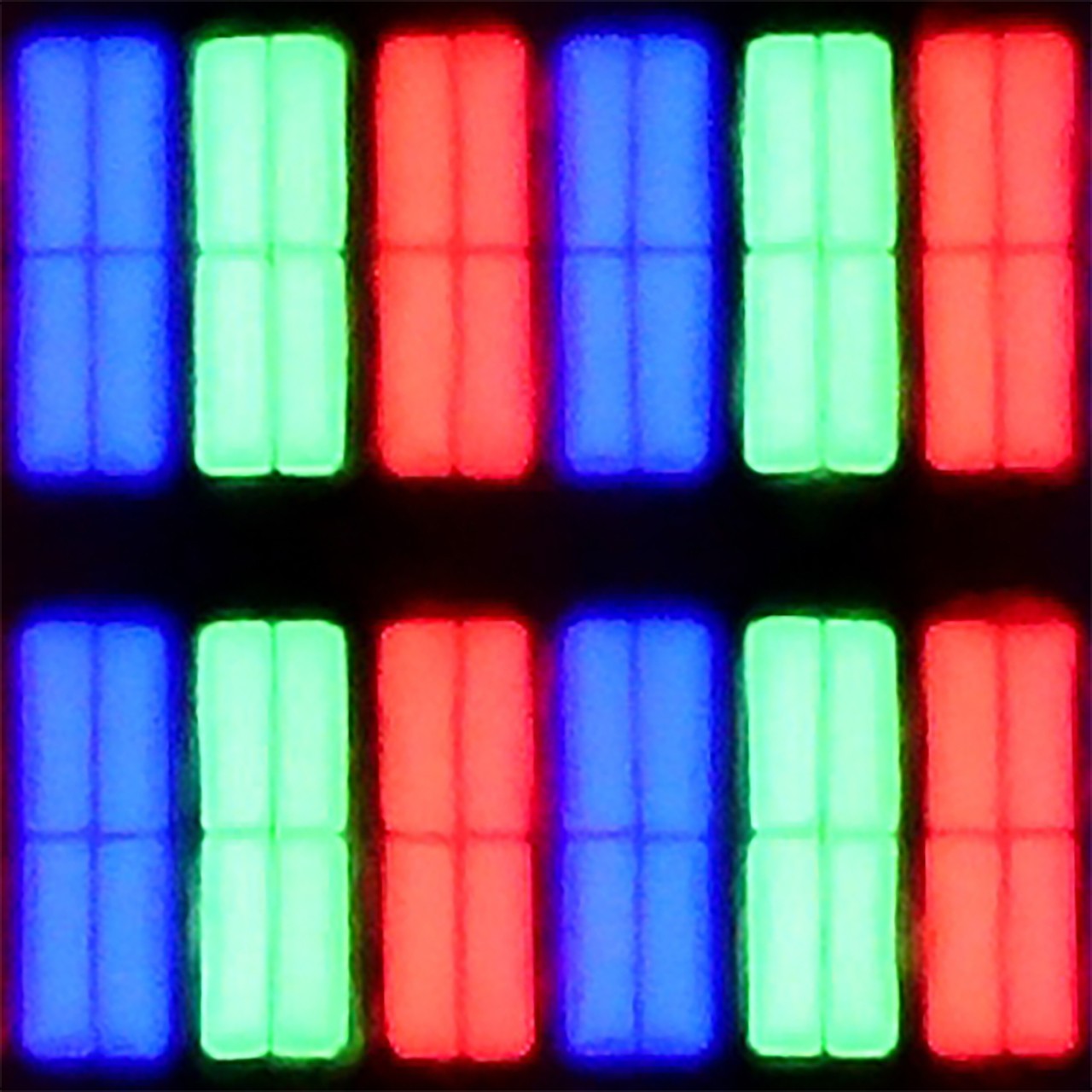
Panel uniformity and thermal imaging:


TV features
8.7/10
6.1/10
- HDMI inputs3 x HDMI 2.0, 0 x HDMI 2.13 x HDMI 2.0, 0 x HDMI 2.1
- Other inputsRCA (Chinch)RCA (Chinch)
- OutputsToslink (Optical audio), eARC (HDMI), ARC (HDMI), Mini-Jack (Headphones)Toslink (Optical audio), eARC (HDMI), ARC (HDMI), Mini-Jack (Headphones)
- Network InterfacesWi-Fi 2.4GHz, Wi-Fi 5GHz, Ethernet (LAN) 100MbpsWi-Fi 2.4GHz, Wi-Fi 5GHz, Ethernet (LAN) 100Mbps
- TV receptionDVB-T, DVB-T2, DVB-S, DVB-S2, DVB-CDVB-T, DVB-T2, DVB-S, DVB-S2, DVB-C
Classic features:
- Recording to USB (terrestrial TV)
- Recording programming
- Picture in Picture (PiP)
- RF remote control (no need to aim at the screen)
- Backlit remote control
- Teletext
- Audio only mode
- Bluetooth headphones support
- Simultaneous Bluetooth headphones & TV audio
Smart features:
- AirPlay
- Screen mirroring (Windows Miracast)
- Voice search
- Voice search in native language
- Ability to connect a keyboard and mouse


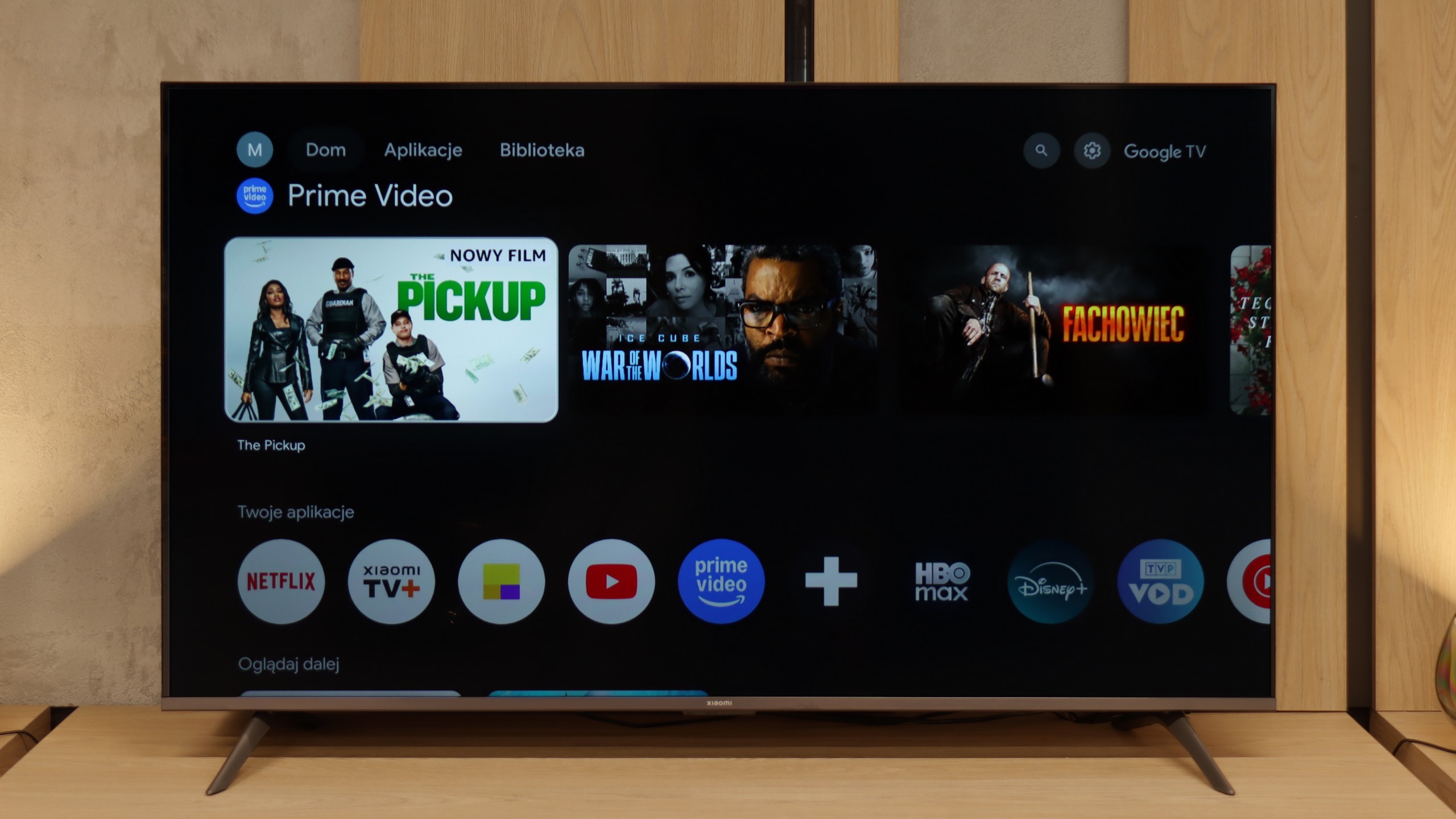
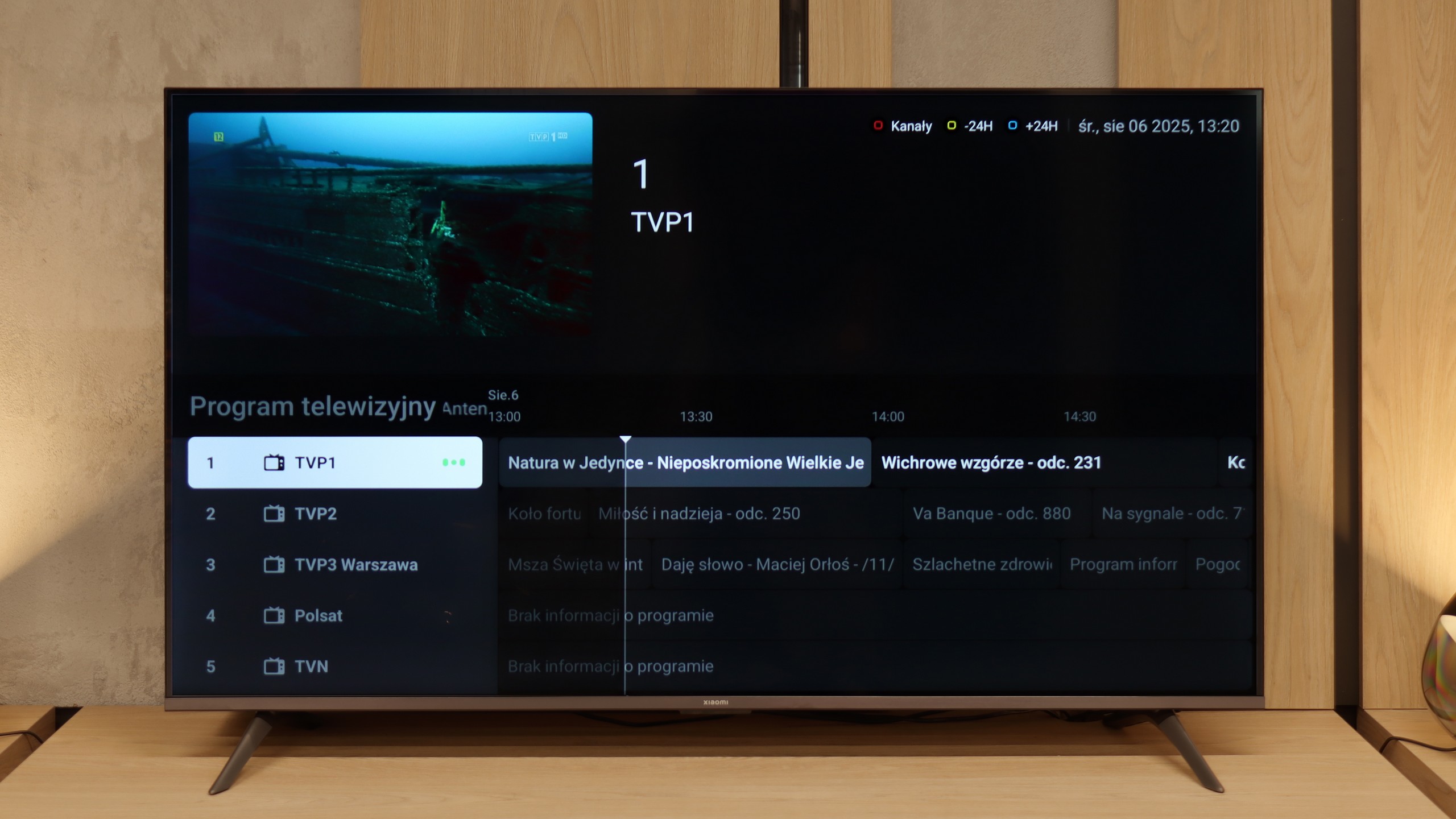
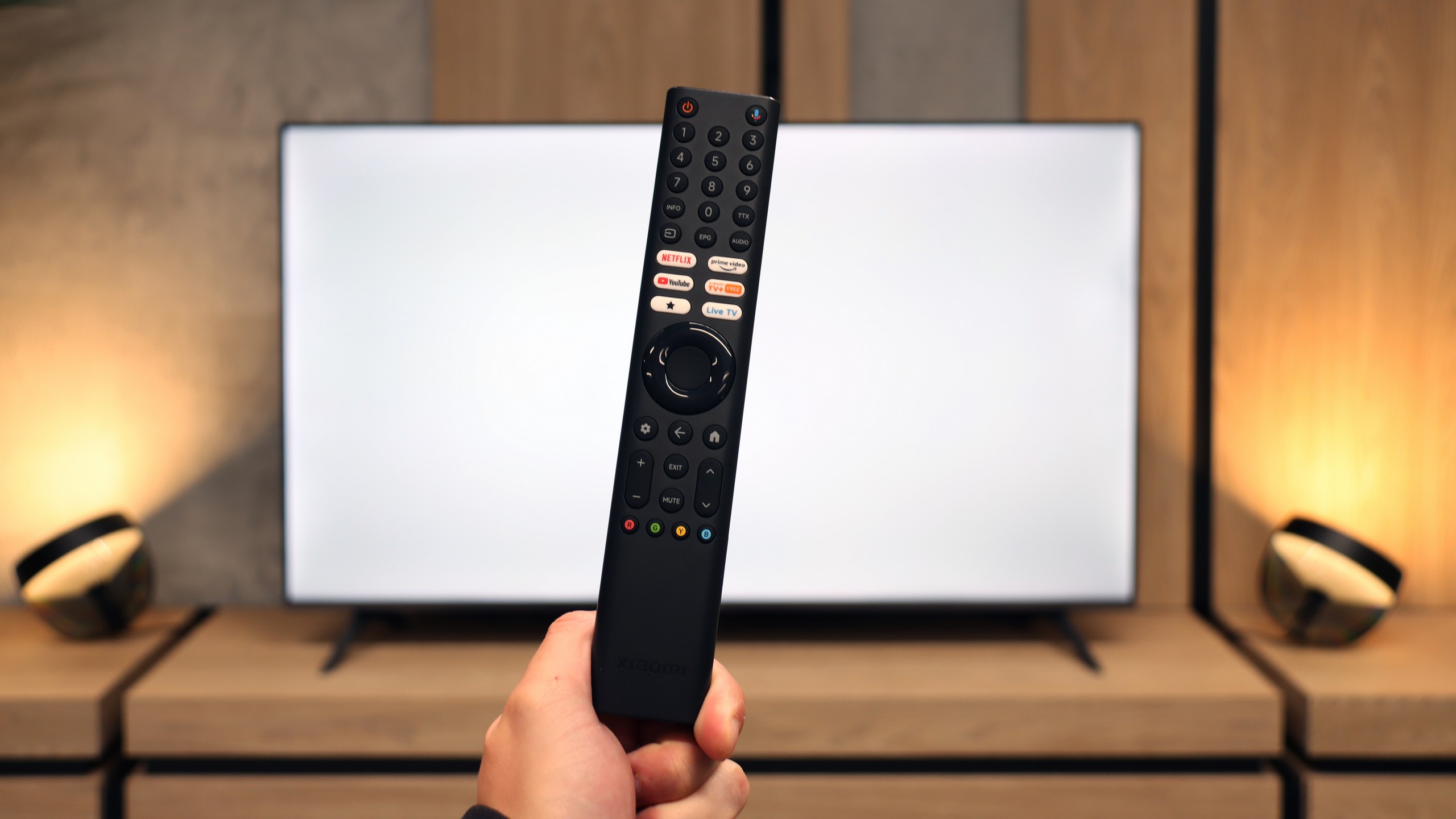
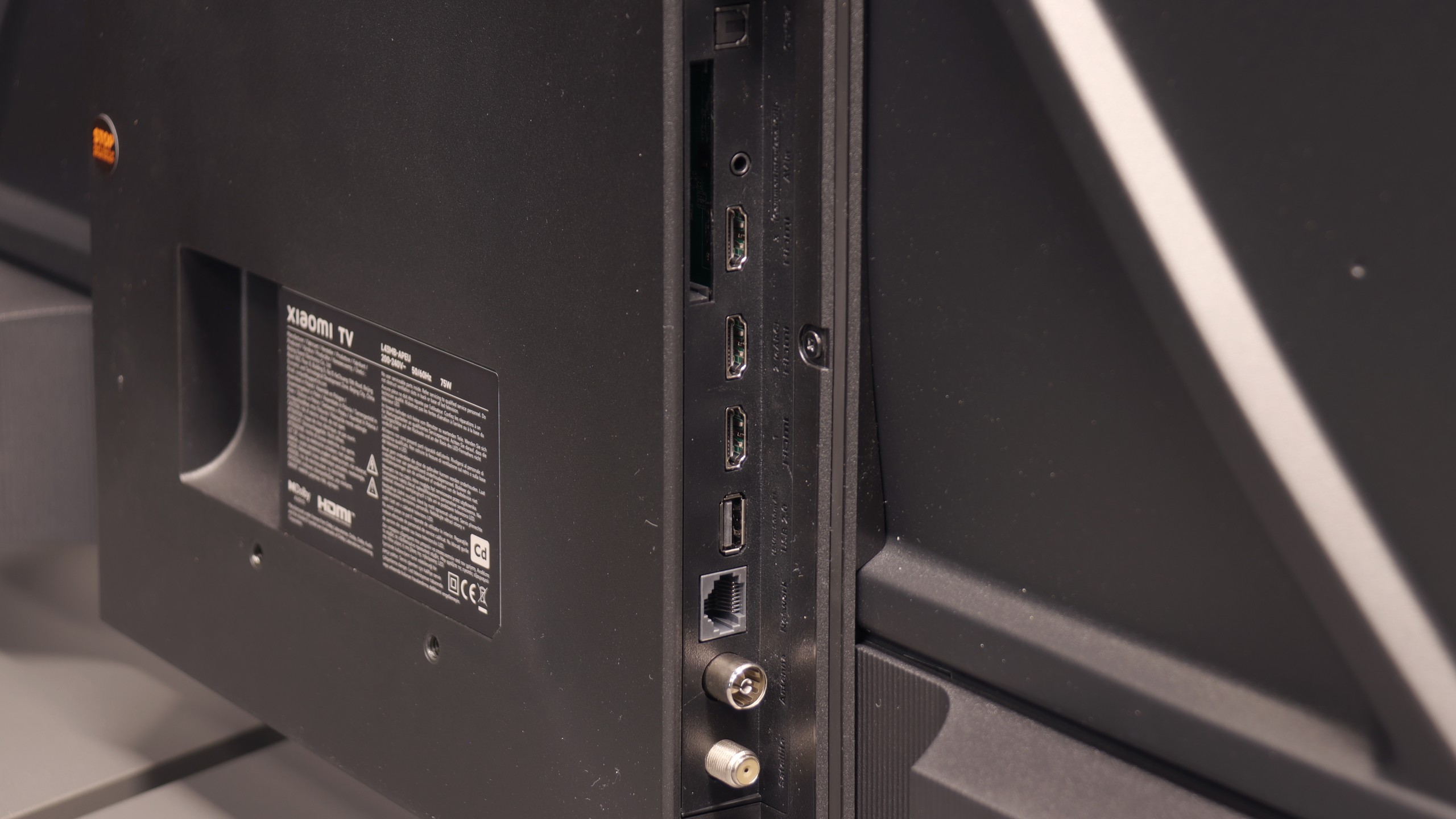
Hisense A7NQ runs on the Vidaa system, which may not be as developed as those from Korean giants, but it does what it needs to. It is clear that Hisense is starting to understand the Polish market – the latest updates have added the most important streaming applications. We can easily find the most popular streaming applications here. Unfortunately, if someone is counting on Tidal or Spotify, they will not find them here – it's a bit of a shame, as it would further complement the system. The Vidaa system itself works surprisingly smoothly. The menu is simple, and voice control in Polish is a nice touch that makes daily use easier. There are no unnecessary complications, everything is at hand, and it works without significant delays.
In terms of features, the television also performs well. Recording to USB works thanks to the built-in tuners, and connecting additional devices via Bluetooth or USB is seamless. AirPlay and Miracast are additional advantages – you can easily stream content from your phone or laptop.
There is, however, a lack of the PiP (picture-in-picture) function, but that is likely something that will only be noticed by those who really need it. Just like recording to USB – it's great that it's available, but not everyone will use it.
SmartTV - Google TV
The biggest advantage of the Xiaomi A Pro 2026 is the Google TV system. It is what gives the television a second life – you can run practically any application on it, from Netflix and YouTube to music services and lesser-known programmes from the Google Play Store. We are not limited to what the manufacturer has pre-installed, as is the case with other budget televisions. Additionally, we have AirPlay, voice search via Google Assistant, and even integration with Gemini. We did encounter a few minor hiccups – for example, streaming from a laptop did not always want to work – but despite these shortcomings, Google TV is a huge plus in this setup.
Classic TV Functions
The Xiaomi A Pro 2026 can be termed a 'senior-friendly' television. The large remote control with a numerical keypad and a considerable number of physical buttons makes it intuitive to operate. Support for teletext and a clear EPG interface facilitate the use of classic television functions. We will not find many advanced features such as USB recording or the PiP function, but the presence of an analogue headphone jack output can be surprisingly practical for some users. It gives the impression of a set of features tailored to the needs of the most traditional viewers.
System Stability
However, not everything works as it should. During testing, we encountered irritating system lags, problems with Miracast, and issues when switching audio sources. There were even instances where it was necessary to reset the television by disconnecting it from the power supply. This simply shows that although Google TV offers huge possibilities, the stability in such a budget-friendly construct can still be quite problematic.
Playing files from USB
5.5/10
6.8/10
Supported photo formats:
Maximum photo resolution:

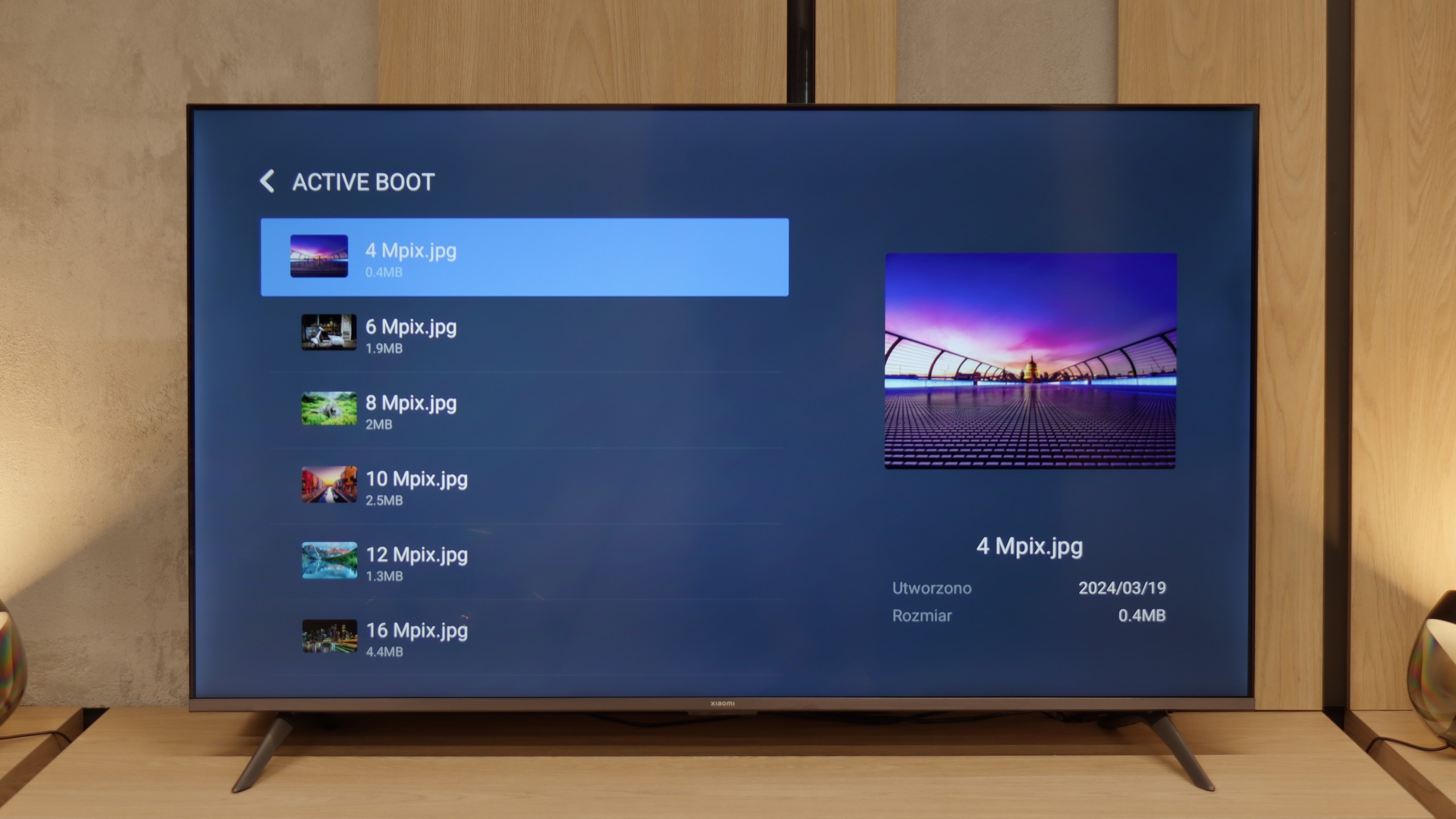
During tests of the USB file player, we encountered something really strange. Normally, we check whether the television can handle external files with subtitles so that one can comfortably watch foreign productions in Polish. Unfortunately, despite the presence of various subtitle formats on our pendrive, the television did not display any of them. Interestingly, there was an option in the menu to change the font colour, so it seems that the feature should be functioning. We believe this is a matter to be fixed in an update, but for now the situation is simply strange and somewhat concerning. As for other types of files, things are much better. The television handles most popular audio and photo formats, so playing music or browsing holiday photos will not pose a problem.
The built-in media player in the Xiaomi A Pro 2026 is a real enigma. On one hand, it plays most popular audio and video formats without major issues. On the other hand, it can struggle with basic things like Polish characters. Files with letters such as ą, ł, ć or ś in their names often refuse to open or are displayed incorrectly. This looks strange, as we seemingly have codec support, yet the television simply gets lost on simple matters related to the alphabet. Fortunately, this is not a huge problem, as thanks to Google TV we can simply install another player, e.g. VLC. Then the issue with Polish characters disappears completely, and using multimedia becomes hassle-free.
Apps
7.7/10
9.6/10














































Sound
5.9/10
5/10
- Maximum volume-81dB
- Dolby Digital Plus 7.1
- Dolby True HD 7.1
- Dolby Atmos in Dolby Digital Plus (JOC)
- Dolby Atmos in Dolby True HD
- DTS:X in DTS-HD MA
- DTS-HD Master Audio
The Hisense A7NQ performs like most mid-range televisions – it's acceptable but without much excitement. The sound meets its purpose in everyday use, but if we expect strong sensations, it is worth considering adding a soundbar. On the positive side, the television supports practically all popular surround sound formats, including Dolby Atmos and DTS:X. This means that if we have the appropriate external equipment, we can enjoy a more immersive sound experience.
Last year, the Xiaomi A Pro 2025 surprised us with really decent sound, considering it is a super budget television. Unfortunately, this year's edition – the A Pro 2026, has let us down across the board. The sound resembles the sensation of the equipment playing from underwater: flat, devoid of any bass or depth. The only upside remains the wide support for audio formats, such as Dolby Atmos or DTS:X, but in practice, it changes very little. If you are considering this television, you must immediately factor in a soundbar, as without it the audio experience will be quite disappointing.
Acoustic Measurements
No acoustic data
81dBC (Max)
75dBC


